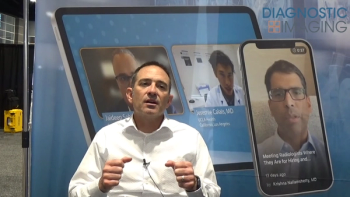
COVID-19 Decimates Community-Based Imaging Volumes, Hitting Mammography Hardest
From February to April 2020, outpatient imaging in rural areas fell 66 percent.
COVID-19 has wreaked havoc on imaging volumes across radiology. New research reveals that community-based practices have felt the brunt of the loss, particularly with mammography screenings.
In a new study published this week in the
While this analysis reveals a currently bleak picture, providers could also make the findings actionable, using them to craft recovery strategies as the industry continues to grapple with the pandemic.
Related Content:
“Our findings support widespread anecdotal, as well as early published reports of massive declines in imaging volumes and revenue that have led to great concern across radiology practices,” wrote lead study author Richard Duszak, M.D., professor and vice chair for health policy and practice in the radiology and imaging sciences department at Emory University. “With no end in sight of the current pandemic, such information could prove actionable for both radiologist workforce and practiced financial planning, particularly if a predicted potentially disastrous ‘second wave’ of coronavirus disease, indeed, materializes.”
To determine the impact on community practices, Duszak’s team evaluated imaging metadata collected between January 2019 and May 2020, looking at volume trends by modality, site of service, and body region.
According to their results, outpatient imaging fell by 66 percent between February and April of this year. When examined as a percentage of total all-practice work RVUs, CT and radiography/fluoroscopy took the biggest hits, dropping 31 percent and 30 percent, respectively. In addition, abdominal/pelvis imaging fell 25 percent, and breast imaging declined 19 percent, both experiencing the most significant body part drops.
Most significantly, the team pointed out, mammography plummeted the most across the different modality-regions groups. This service line saw a 92-percent plummet.
Alongside these changes in imaging volume, the team also pinpointed some downstream effects that could impact radiology is the effects of the pandemic continue or worsen. For example, they said, if revenues continue on a downward trajectory, the specialty could become less attractive to medical students looking to choose their career path or it could push some radiologists getting close to retirement age to pull the trigger early, leaving practices and departments without senior leadership.
From another financial and management perspective, this situation could further bolster the culture of consolidation already thriving in radiology, they said.
Ultimately, they said, this analysis could inform decision-making around radiologist manpower, clinical coverage, and financial planning as the pandemic lingers on.
“In light of predictions of an upcoming, potentially disastrous ‘second wave’ of coronavirus disease, such information could provide actionable for radiology practice planning,” they said.
Newsletter
Stay at the forefront of radiology with the Diagnostic Imaging newsletter, delivering the latest news, clinical insights, and imaging advancements for today’s radiologists.




























